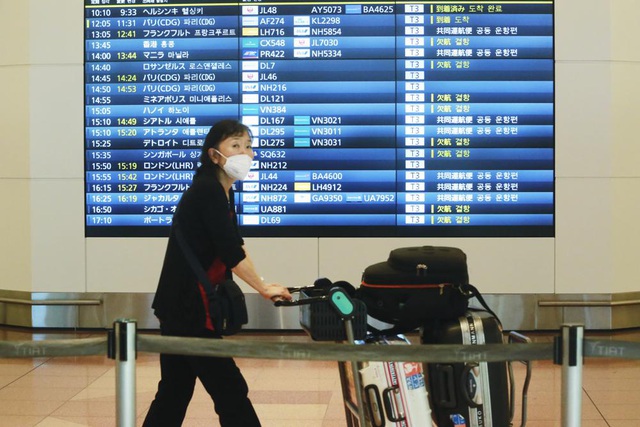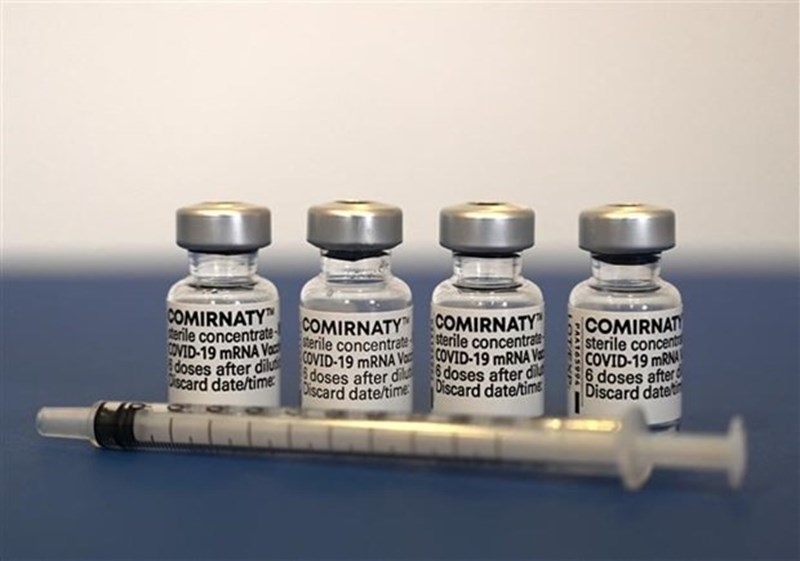Cambodia claims to have eliminated COVID-19, the number of fever cases in North Korea continues to decrease
To date, more than 536.23 million people have contracted COVID-19 globally. (Photo: AP)
The country most severely affected by the epidemic COVID-19, the US currently records over 86.66 million cases and nearly 1,034 million deaths. In the past day, the US recorded more than 26,500 people SARS-CoV-2 virus infection.
At the world’s second largest COVID-19 epidemic center Indiaon June 7, the country recorded a total of over 43.18 million people with COVID-19, including more than 524,700 deaths from COVID-19.
Brazil Currently, it is the third largest epidemic hotspot in the world with more than 667,000 COVID-19 patients not dying out of a total of over 31.19 infected people in this country.
University of Sydney researchers surveyed more than 1,000 people in Australia about their experiences with mental health during the COVID-19 pandemic. The results of this survey will be used to help “kangaroo country” officials plan future policies.
Published in the journal PLOS ONE on June 7, the study involved 1,037 Australians aged 18-89 between December 2020 and June 2021, which assessed the their own mental health experiences and interactions with mental health resources.
The study’s lead author, University of Sydney mental health scientist Marlee Bower, said the COVID-19 pandemic was “putting pressure” on factors that influence mental health. and led many Australians to seek mental health support for the first time.
On June 7, Foreign Minister Virtue Annalena Baerbock had to shorten her visit to Pakistan, the first stop on a tour of several countries, after testing positive for the SARS-CoV-2 virus. Ms. Baerbock tested positive shortly after holding talks with her Pakistani counterpart Bilawal Bhutto Zardari, discussing bilateral cooperation and regional challenges, including the situation in Afghanistan. Earlier on the same day, Foreign Minister Baerbock arrived in Islamabad, starting a two-day visit to Pakistan.
After testing positive for the SARS-CoV-2 virus, Ms. Baerbock was forced to cancel both a visit to Greece and Turkey where she was expected to meet the leaders of these two countries to discuss issues. topic of common interest.
The non-profit organization Elem has just released a report showing that violence and psychological disorders among adolescents in Israel in 2021 has increased sharply compared to 2020 and especially in 2019, the time before the COVID-19 epidemic.
With an extensive network in 42 cities and towns in Israel, Elem collected information on 12,500 young people. In its annual report Elem 2021, this organization stated that about 2,126 minors in Israel reported incidents of violence outside the home in 2021, an increase of 170% compared to 2020 and an increase of 360 % compared to 2019. Domestic violence cases also increased by 120% and 250% respectively compared to the previous two years. Among these violent incidents, the number of cases directly related to minors increased by 230% compared to the time before the COVID-19 epidemic.

The COVID-19 epidemic has led to violence and psychological disorder among adolescents in Israel. (Photo: AP)
In addition, Elem recorded a 230% increase in sexual violence cases, to 1,682 cases. In addition, the organization received many reports of boredom and anxiety, an increase of 190% compared to 2019. Also according to the report, 1,432 minors reported self-harm, an increase of nearly 150%. Alcohol and drug use also increased sharply, at 130% and 150% respectively.
The Elem report states that the COVID-19 pandemic has made teenagers feel useless, especially those from unhappy families. The social blockade to prevent the epidemic has made the children stay at home more, thereby having less opportunity to go out to relieve their psychology. In addition, during the epidemic, children use a lot of the Internet and malware.
Bolivia has entered the 5th wave of COVID-19 epidemic. The Bolivian Ministry of Health announced that the number of new cases of COVID-19 in the country last week (from May 29 to June 4) stood at 1,609 people, increased 24% from the previous week and marked the 4th consecutive week of increasing cases.
Before new developments, the Government of Bolivia determined that the 5th wave of COVID-19 epidemic had begun in this South American country. Bolivian Health Minister Jeyson Auza affirmed that, in the face of a new wave of infections, the Bolivian government will take all necessary measures to ensure normal economic and educational activities. Mr. Auza pointed out that the Bolivian health sector will step up the provision of diagnostic tests, increase vaccination of COVID-19 vaccines and further promote epidemiological surveillance processes.
Since the pandemic broke out in March 2020, this South American country has recorded more than 910,500 cases of the disease, including over 21,900 deaths.
Central News Agency North Korea (KCNA) reported that in the past 24 hours, the country recorded 61,730 new fever cases, bringing the total number of people with fever to 4.19 million cases. This is the second day in a row that the number of new fever cases in North Korea has been below 70,000 cases/day, and at the same time has remained below 100,000 cases/day for the 8th consecutive day, dropping significantly after peaking at more than 392,920 cases. on 15/5 last.
More than 4.08 million people have recovered from fever, while at least 115,240 people are still being treated, according to data from North Korea’s National Center for Emergency Disease Prevention and Control.
On May 12, North Korea announced its first case of COVID-19 in the country related to the BA.2 sub-line of the country. Omicron variant. According to KCNA, the number of daily fever cases in North Korea has decreased by about 6% since May 15, as a result of the anti-epidemic campaign carried out in the country. North Korea is also ramping up production of various disinfectants and medical supplies.
From June 10, all foreign visitors entering the country Japan are required to wear a mask and have insurance to cover health care costs in the event they contract COVID-19.
Japan’s Ministry of Land, Infrastructure, Transport and Tourism (MLIT) has just drafted a guideline document, which emphasizes that foreign tourists must comply with the above regulations before making a trip in Japan. this Northeast Asian country. In the event that a foreign tourist is found to have COVID-19, the travel agencies are responsible for taking the traveler to medical facilities and providing support until they leave Japan. Travel agencies must keep information about tours so that in the event that a visitor has COVID-19, the authorities can quickly trace and isolate close contacts.

Japan will open its borders to tourists from June 10. (Photo: AP)
Earlier, on May 26, Prime Minister Kishida Fumio announced that the country would open conditional doors to foreign tourists from June 10. However, Japan will only grant entry to visitors from 98 countries/regions on the list of low positive rates for SARS-CoV-2 virus. In addition, to limit the spread of the disease, visitors will have to register for a group tour through a travel agency and accompanied by tour guides.
On June 1, Japan began to double the limit on the number of people entering the country per day to 20,000 people. Before the outbreak of COVID-19, tourism was one of the industries with high growth rates and major contributors to the Japanese economy.
Schools in Shanghai, China has gradually reopened after more than two months of closure due to the COVID-19 epidemic. Some high school students in Shanghai have been allowed to return to school since June 6. More students are expected to return to class next week.
Before entering class, students must bring a negative antigen test, scan a QR code to show COVID-19 test results, and take their temperature.
Shanghai lifted the blockade order from June 1, and residents are required to have COVID-19 test results within 72 hours to be able to enter areas such as shopping centers and offices.
On June 7, nearly 12 million Chinese students took the Gao exam, the most important exam in a student’s life, the national exam for admission to universities and colleges. With the number of candidates nearly 10% larger than in 2021, in the context of the sporadic outbreak of the COVID-19 epidemic, this is a pressure for both authorities and candidates in China. Due to the epidemic, Shanghai is the only locality to postpone this exam until July.
On June 7, the Ministry of Health Cambodia announced, the Southeast Asian country has eliminated COVID-19 after the last patient with the disease recovered. According to the statement of the Ministry of Health of Cambodia, the country has no longer recorded any new cases of COVID-19 for 31 consecutive days. Since the pandemic broke out in January 2020, Cambodia has recorded a total of 136,262 cases, of which 133,206 patients have recovered and 3,056 deaths.
With a high vaccination rate, as of November 2021, Cambodia has restored all socio-economic activities and reopened its borders to travelers who have received basic vaccinations without quarantine. . Kin Phea, head of the Institute of International Relations of the Royal Academy of Cambodia, highly appreciated the role of vaccines in protecting people’s lives, stabilizing the health system and contributing to the recovery. economy.
* Invite readers to watch programs broadcast by Vietnam Television on TV Online and VTVGo!
at Blogtuan.info – Source: vtv.vn – Read the original article here



